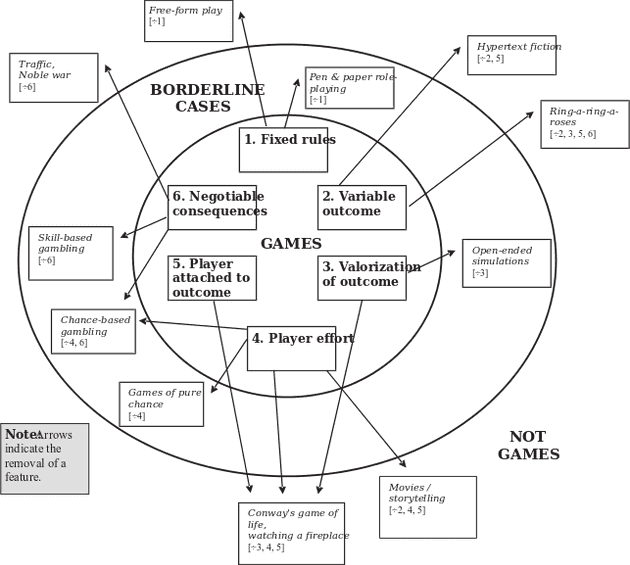Six components of a Classic Game Model: Rules, Variable and measurable outcomes, Values on those outcomes, Player effort, Player attachment, and Negotiable Consequences
Paper: The Game, the Player, the World: Looking for a Heart of Gameness
In Five Definitions of Game, we learned about Jesper Juul's definition of game:
"A rule-based formal system with a variable and quantifiable outcome, where different outcomes are assigned different values, the player exerts effort in order to influence the outcome, the player feels attached to the outcome, and the consequences of the activity are optional and negotiable"
In the Danish game researcher's paper, The Game, the Player, the World: Looking for a Heart of Gameness, he combines multiple game design perspectives into a formal definition he calls the "classic game model." According to this model, games contain six distinct features:
- Fixed rules (Clear instructions limit what players may do.)
- Variable, quantifiable outcomes (The ending can differ and we can tell who won.)
- Values associated with each outcome (One ending is better than another, so victory matters)
- Player effort (Winning demands skill, thought, or quick moves)
- Player attachment (The result stirs real emotion in the player)
- Negotiable Consequences (The winners may claim bragging rights or even prize money, yet the group can choose to keep it friendly.)
Juul's model highlights the relationship between the game, the player, and the world. While he admitted that games might be forever indefinable, this model helps us discuss how the boundaries defining a game can shift over time.
From this Classic Game Model, we can also see why games form addictive habits. The Hooked model outlines four steps in habit formation: triggers, actions, variable rewards, and investments.
The fixed rules described in the Classic Game Model dictate user actions. Similarly, the variable and measurable outcomes align closely with the variable rewards of the Hooked model. Additionally, player effort and attachment correspond directly to the investments identified in the Hooked model.
